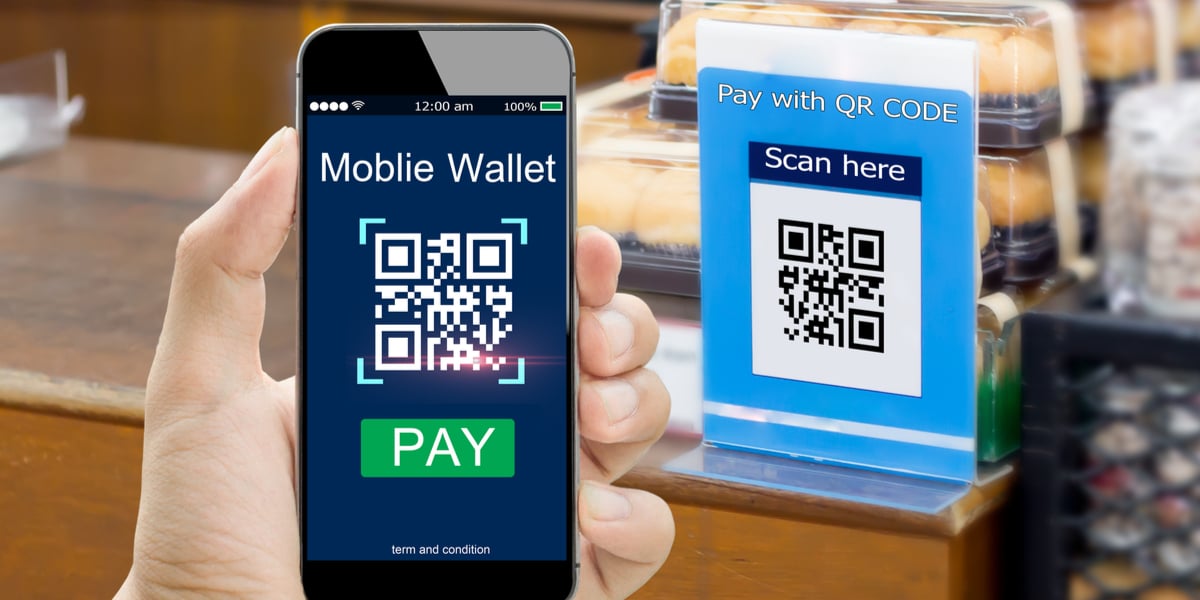Friendly Fraud Prevention
 FAQ: What is a chargeback? How do I prevent them?
FAQ: What is a chargeback? How do I prevent them?
 FAQ: What is Chargeback Representment?
FAQ: What is Chargeback Representment?
 TIPS: Fighting Airline & Travel Chargebacks
TIPS: Fighting Airline & Travel Chargebacks
 Tips Implementing Manual Review
Tips Implementing Manual Review
 TIPS: How to choose Chargeback Services & Management
TIPS: How to choose Chargeback Services & Management
 FAQ: What is VROL?
FAQ: What is VROL?
 Chargeback Prevention: Fighting Chargeback with Delivery Confirmation
Chargeback Prevention: Fighting Chargeback with Delivery Confirmation
Table of Contents
- What Is Friendly Fraud?
- Friendly Fraud as Cyber-Shoplifting
- Customer Confusion
- Customer Dissatisfaction
- What Is Family Fraud?
- What's the Difference Between True Fraud and Friendly Fraud?
- What Are the Consequences of Friendly Fraud?
- How Can Merchants Prevent and Fight Friendly Fraud?
- The Future of Friendly Fraud
There are a number of reasons why a merchant might dismiss chargebacks as a cost of doing business, but one of the most common is that they underestimate how much revenue they can recover by fighting them. If you don't fight your chargebacks, you have no way of knowing how many of those chargebacks are illegitimate. It might be far more than you think.
Illegitimate chargebacks, also known as friendly fraud, make up the majority of the chargebacks many merchants receive. Most cardholders don't put a lot of effort into determining whether or not their claim is a valid reason to file a chargeback before disputing the charge, and aggrieved customers often feel that misrepresenting their situation is justified if it gets them their money back.
Merchants can fight friendly fraud chargebacks and recover their revenue, but the process can be a bit complicated. Let's examine what friendly fraud is and how merchants can prevent, identify, and fight it.
What Is Friendly Fraud?
 Cardholders can only legitimately dispute a charge when they’re the victim of true fraud, or when they didn’t get the product or service they paid for and the merchant is unhelpful or unresponsive.
Cardholders can only legitimately dispute a charge when they’re the victim of true fraud, or when they didn’t get the product or service they paid for and the merchant is unhelpful or unresponsive.
Almost any issue a cardholder has with a transaction can be resolved more quickly and easily by contacting the merchant, and cardholders are required to attempt to work things out with the merchant directly before filing a chargeback.
There are four common causes of friendly fraud. Let's go over them one at a time.
Friendly Fraud as Cyber-Shoplifting
Sometimes a customer makes a purchase with the intention of falsely disputing the charge. They may have read online that disputing a charge will usually get you your money back, essentially allowing you to get whatever you purchased for free. They may have filed a legitimate chargeback in the past and then later decided to abuse the process.
Either way, these fraudsters will call the bank to dispute a charge and lie about the reason, saying the purchase was unauthorized, the product was damaged, or making some other claim that would constitute cause for a chargeback. They will also lie and say that they weren’t able to get in touch with the merchant or that the merchant refused to refund the purchase, when in reality, they never attempted to contact the merchant at all.
Customer Confusion
If a customer made a purchase and then forgot, doesn't recognize the billing descriptor on their account statement, or sees a recurring charge that they didn't think they agreed to, they may contact their bank and tell them the charge wasn't authorized.
Customer Dissatisfaction
If a customer feels like they were tricked or didn't get what they paid for, they may file a chargeback without contacting the merchant, even if the reason they want to dispute the charge is illegitimate.
When a customer believes the merchant has intentionally deceived them, they're unlikely to turn around and contact that merchant to resolve the issue. They're more likely to assume that the merchant was intentionally dishonest and would only lie or stonewall them if they asked for a refund. Therefore, they take their problem straight to the bank instead.
Chargebacks can also occur when a customer wants a refund for whatever reason and the merchant won't give it to them.
It's incredibly rare for customers to actually read the terms and conditions associated with a purchase they've made. To be fair, doing so for every product and service you use would take an enormous amount of time. Norway's Consumer Council found that it took around an hour to read the terms of service for most social media apps, nearly two hours for LinkedIn, and over three hours for iTunes.
Because of this, a customer's expectations regarding a product or service they purchased have more to do with their own idea of fairness than the actual terms they agreed to. Any disconnect between these expectations and a merchant's policies can lead to a conflict, and if customer service is unable to resolve the issue, a chargeback is likely to follow.
What Is Family Fraud?
Kids have been stealing their parents’ credit cards and trying to make unauthorized purchases since the days of 1-800 numbers and mail-order catalogs, but it took eCommerce to really kick the problem into overdrive.
The current trend in the industry is to make online payments easier and more seamless, and customers are demanding that just as much as merchants. On top of that, the current state of technology has made it easier than ever to store payment information across multiple accounts and devices for ease of use.
This has made life easier for merchants and customers in many ways, but it also means that unsupervised toddlers, sneaky teenagers, and anyone else with an itch to make a purchase can do so with just a few simple taps on a touchscreen.
Some of the most frequent instigators of unauthorized family purchases include streaming video and music, in-app purchases in video games, one-click shopping options on sites like Amazon, and website subscriptions.
Video games are one of the most common causes of family fraud. Many modern games, both on gaming consoles and on smartphones, feature in-app purchases. Most of the platforms these games are on also default to saving any payment information used to make a purchase. That means that if a parent enters their credit card information just once to buy their child a new game or a new in-game item, the child can then make an unlimited number of purchases without entering any payment information.
The prices of these in-game items are often given in terms of some virtual currency like coins or points, with this currency available for purchase with real money. This is intended to avoid drawing the player’s attention to how much money they’re spending, but with children, the tactic often works a little too well. There have been many cases of children spending hundreds of dollars in coins without even realizing any real money was involved.
Some banks have policies that explicitly state that family fraud isn't an authorized reason for a chargeback. Most, however, don't have a specific publicly available policy on the matter, and instead may have an internal policy for these situations or may handle them on a case-by-case basis.
What's the Difference Between True Fraud and Friendly Fraud?
When a cardholder is a victim of true fraud, their main recourse is chargebacks. This is the reason chargebacks exist: to protect cardholders from true fraud. Merchants should always accept chargebacks they believe to be cases of true fraud, since these chargebacks can't be fought successfully.
When dealing with a friendly fraud chargeback, however, it’s the banks, the card network, and the merchant who are the victims, although the merchant will end up bearing the cost. Whether intentional or unintentional, chargeback fraud causes serious issues for merchants.
What Are the Consequences of Friendly Fraud?
Issuing banks and merchants seem to have very different perspectives on friendly fraud rates. Issuing banks report that friendly fraud accounts for 17% of the chargebacks they see, while merchants report the number to be as high as 32%.
 Why the discrepancy? Cardholders will often present their reasons for disputing a charge in the language they think the bank wants to hear, and the bank doesn’t hear the merchant’s side of the story unless the merchant submits a representment package and fights the chargeback.
Why the discrepancy? Cardholders will often present their reasons for disputing a charge in the language they think the bank wants to hear, and the bank doesn’t hear the merchant’s side of the story unless the merchant submits a representment package and fights the chargeback.
Additionally, it’s easier than ever to dispute a charge with your bank. Most issuing banks now allow their customers to dispute a charge from within their mobile banking apps or by going to the bank’s website.
Nearly three-quarters of surveyed merchants believe that it’s too easy to dispute credit card charges nowadays, and a slim majority of issuing banks (53%) concur.
Friendly fraudsters who get away with it very frequently become repeat offenders — as many as 83%, according to some analysts. Some people do so knowing that they’re perpetrating fraud, while others justify it to themselves as simply the way eCommerce works these days. Unfortunately, there are also some parents who decide that disputing charges with their bank is easier than maintaining effective parental controls on their devices.
How Can Merchants Prevent and Fight Friendly Fraud?
The ideal way to deal with any chargeback is to prevent it. For friendly fraud, how you might do this depends on the type of friendly fraud you're targeting. For malicious chargebacks, one common method is to maintain a blacklist of customers who file chargebacks to prevent repeat offenders.
For chargebacks caused by customer confusion, merchants should ensure they have a merchant descriptor that matches the customer-facing name of the business. Ideally, a customer service phone number should also be included to help confused customers contact you before they contact their bank.
For friendly fraud caused by bad customer experiences, obviously, customer satisfaction should be your priority. Make sure your customers aren't feeling tricked or taken advantage of, and have a generous refund policy to prevent refund requests from becoming chargebacks.
When dealing with family fraud, the best way to prevent chargebacks is to issue refunds instead.
This works to your advantage not only by preventing a chargeback, which would cost you considerably more than the transaction amount, but it also helps to bolster your reputation as a merchant that cares about their customers and takes a humane approach toward the all-too-common issues many parents have to deal with.
Unfortunately, not every customer will give you the chance to make things right by contacting your customer service. When a transaction is made with all the correct information and authentication checks, it is not the merchant’s obligation to take the chargeback hit on behalf of the customer.
Merchants should fight back against friendly fraud chargebacks by submitting receipts and other evidence showing that the transaction was authorized by the cardholder and the product or service was delivered.
The Future of Friendly Fraud
Friendly fraud isn't a problem that's likely to go away anytime soon. There will always be bad actors trying to abuse the chargeback system, confused customers, and customers who want to get their money back by any means necessary.
Merchants in certain industries, such as game publishers, may have some leeway to adjust the ways their products handle in-app purchases or stored credentials in order to minimize the problem of children making purchases without permission. Beyond that, the best thing to do is provide excellent customer service to customers who take the step to contact you with a problem, and fight friendly fraud chargebacks to the best of your ability whenever they occur.
FAQ
How Do You Know if a Chargeback is Friendly Fraud?
Is Chargeback Fraud Illegal?
What Are the Three Types of Chargebacks?
Thanks for following the Chargeback Gurus blog. Feel free to submit topic suggestions, questions or requests for advice to: win@chargebackgurus.com



